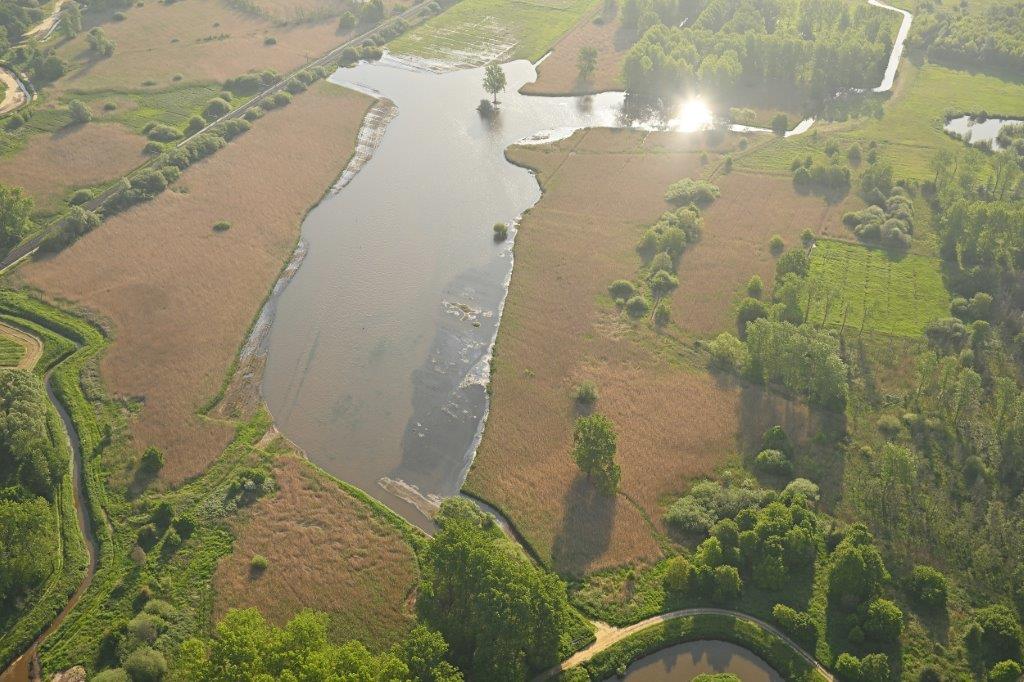Flemish government completes largest remediation of watercourses ever

17 kilometers of watercourse and banks have been thoroughly remediated over the past 7 years in Beringen, Tessenderlo, Diest and Scherpenheuvel-Zichem. The pollution of the Winterbeek with heavy metals and salts has been removed where possible. The remediated banks are clean again and the first positive effects of the improved stream quality are already visible.
Flemish Minister of the Environment Zuhal Demir: “We have to map and clean up historical pollution step by step. We already did this with Winterbeek. With this remediation we are ensuring a clean Winterbeek that now offers new opportunities for nature and agriculture in the valley, along with a healthy environment for residents and recreationists. This remediation is unique in Flanders because of its scale. No less than 17 km of watercourse with its banks has been cleaned up through customized work.”
Cross-sector collaboration
The large-scale remediation operation was possible because of close cooperation between the Flemish government and Tessenderlo Group. Historical discharges from the chemical company polluted the Winterbeek. Flooding and sludge disposal left the contaminated sludge on the banks with possible spreading in the lowlands. VMM and OVAM were responsible for the remediation works, Tessenderlo Group for the safe disposal of the contaminated material.
Through soil investigation, the contamination was mapped. The contaminated sediment was then removed from the watercourse along with part of the soil of the stream bed. Where necessary, we also excavated the banks. With sediment traps we intercepted the remaining suspended material preventing it from ending up in the Demer. In total, 258,000 tons of polluted soil and sediment has been removed.
After remediation, the stream bed and banks were given a layer of clean soil that we hold in place with natural materials such as tree trunks. It creates flow variation which is good for local fauna and flora. The contaminated material was taken to the remediation storage facility 'Kepkensberg' in Ham, which Tessenderlo Group set up for sustainable and safe storage.
First positive effects
Together with the University of Antwerp and the Institute for Nature and Forest Research (INBO), the VMM conducted a large-scale monitoring campaign on the effects of the remediation. The results show that for most pollutants the situation in the water and the sediment improved significantly. Aquatic plants recovered clearly in the watercourse. The effect on aquatic life is not yet fully visible, but the better water quality makes that improvement possible.
Remediation and water retention
The last few kilometers before the confluence with the Demer, the Winterbeek flows through the Kloosterbeemden nature reserve. Together with the Agency for Nature and Forests (ANB), the conservation manager of this area, OVAM and VMM worked out a remediation approach with the focus on permanent inundation of this area.
Through inundation, the contamination immobilizes and that possibility for organisms and plant to take it up reduces drastically. In this way, the natural area is better protected against the pollution and can function even more like a sponge. Wetlands can thus revive and water remains available longer in dry periods.
The approach therefore fits into the Blue Deal, the Flemish Government's fight against drought. The works were co-financed by the European Union through the LIFE project NARMENA (Nature-based Remediation of Metal pollutants in Nature Areas to increase water storage capacity).
Remediation in the picture
Watch this video to get a better idea of the completed works.
Team NARMENA
- Adres
- Stationsstraat 110
2800 Mechelen
Route en bereikbaarheid - Telefoon
- +32 15 284 284
- narmena@ovam.be
